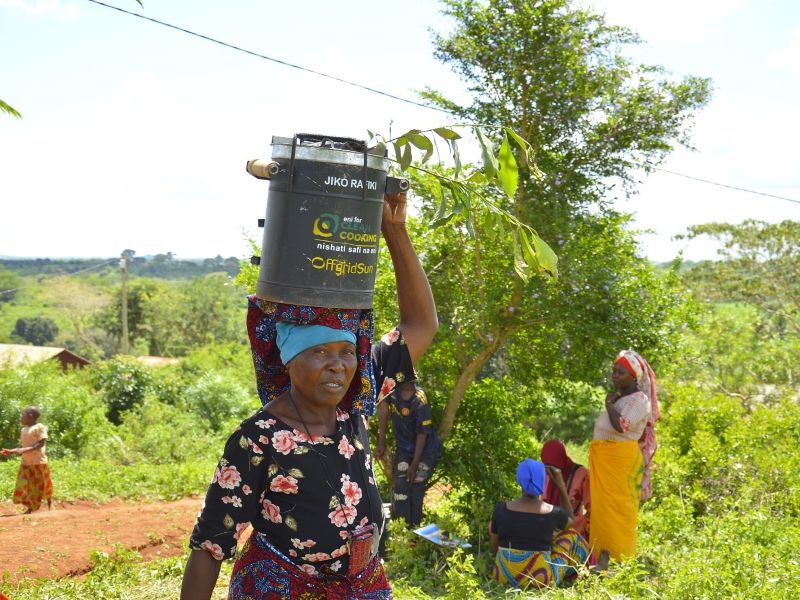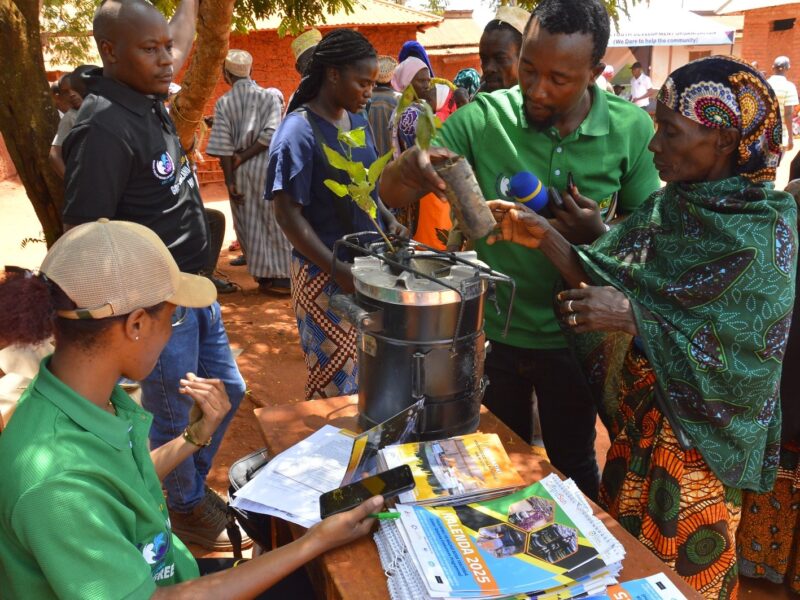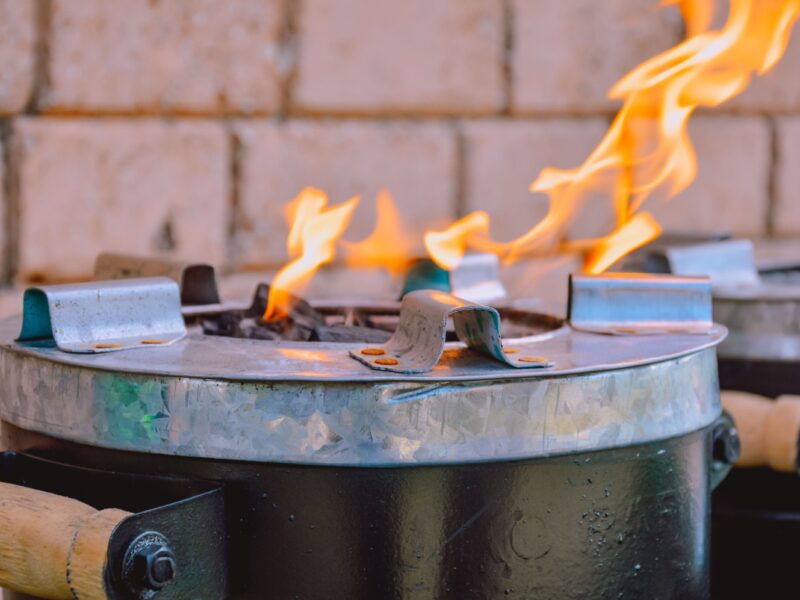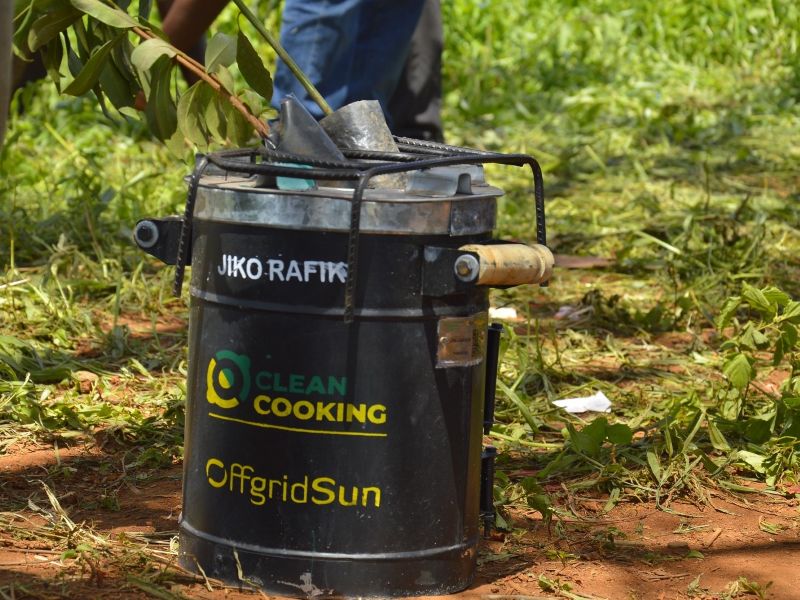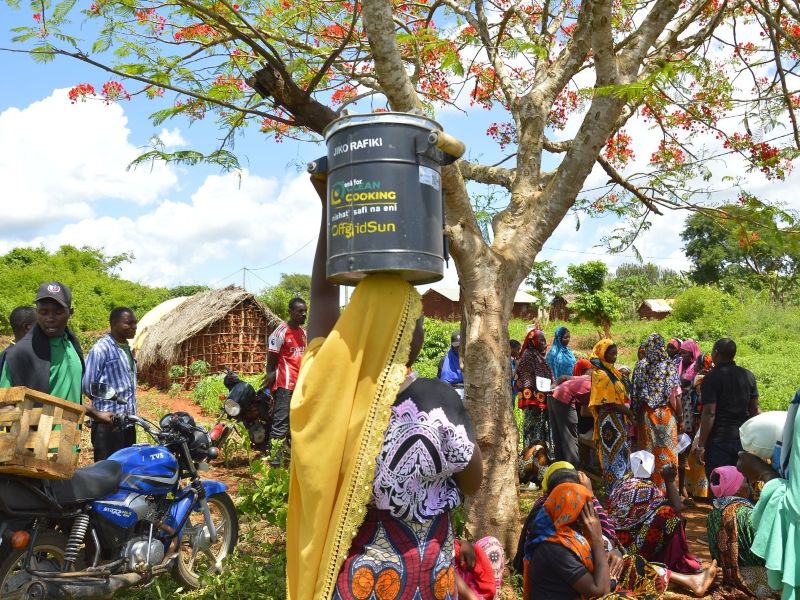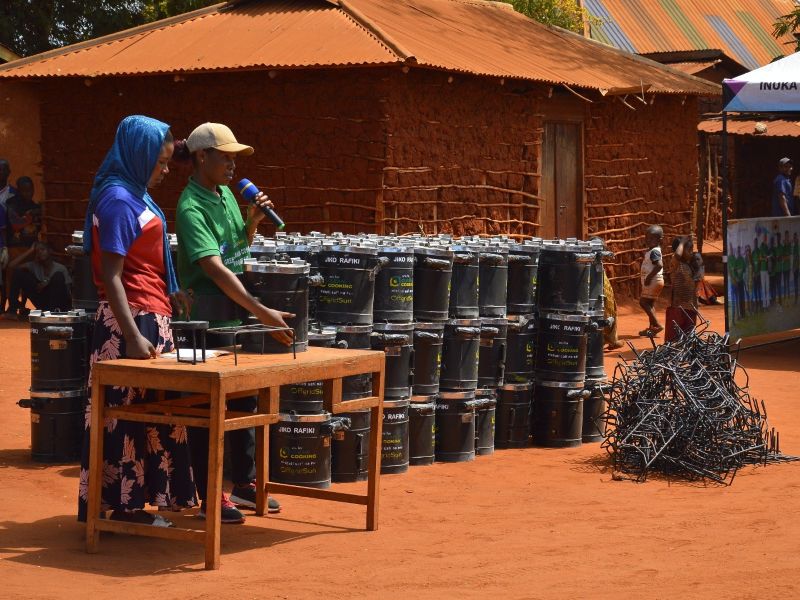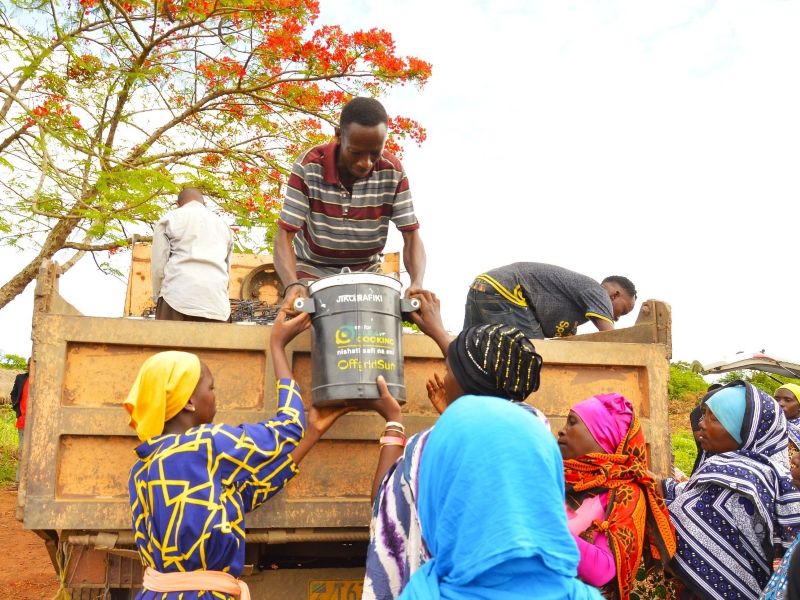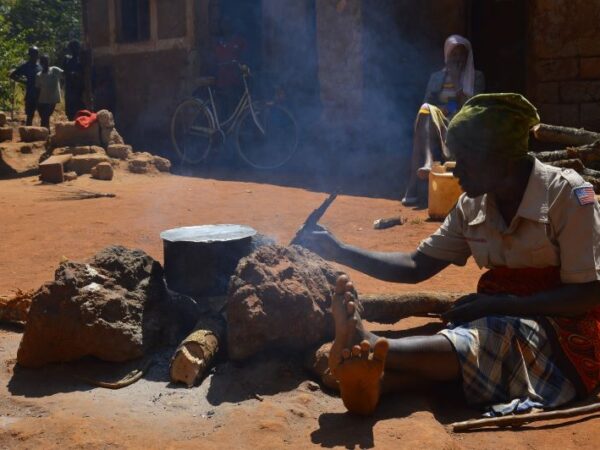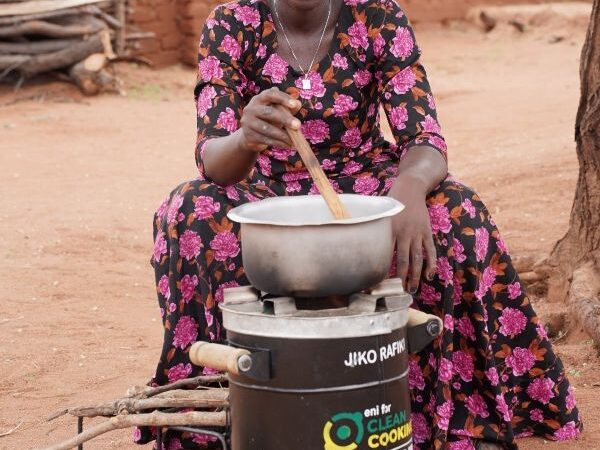Metodi di cottura più efficienti per rallentare il disboscamento
Oltre il 90% della popolazione tanzaniana utilizza legna o carbonella come principale fonte di energia per uso domestico. Nelle aree rurali, questa percentuale è ancora più alta: quasi tutte le famiglie utilizzano fuochi aperti come strumento di cottura e la legna come combustibile, a volte combinata con stufe tradizionali a carbone che hanno un basso tasso di efficienza energetica, consumando grandi quantità di combustibile.
Barriere che limitano l’accesso a tecnologie di cottura più avanzate
L’uso diffuso di metodi di cottura inefficienti tra la popolazione è determinato dalla mancanza di accessibilità a metodi di cottura alternativi più ecologici. Le principali barriere che limitano l’accesso a tecnologie di cottura più avanzate sono la mancanza di conoscenza e consapevolezza da parte dei consumatori e il basso potere d’acquisto delle famiglie nelle aree rurali, che non possono permettersi di acquistare tecnologie di cottura più efficienti.
Promuovere la cottura pulita nelle zone rurali della Tanzania
Impatto ambientale dei metodi di cottura inefficienti
L’uso diffuso di legna e carbonella per uso domestico e l’inefficienza dei metodi di cottura e riscaldamento degli ambienti hanno un impatto negativo su più livelli:
- A livello ambientale, aumentano i livelli di deforestazione dovuti al taglio delle foreste naturali da parte delle comunità rurali per procurarsi legna da ardere e per produrre carbone da utilizzare soprattutto nelle aree urbane e periurbane, dove le stufe a carbone sono più diffuse. Uno studio condotto nel 2021 dalla Sokoine University of Agriculture di Morogoro, in Tanzania, ha dimostrato che in media ogni famiglia utilizza circa 6,7 kg di legna e 3,3 kg di carbone di legna al giorno per cucinare. Dal 2010 al 2021, la Tanzania ha perso circa l’11% delle sue foreste (Global Forest Watch) a causa della deforestazione.
- L’uso di metodi inefficienti per la cottura dei cibi comporta il rilascio di sostanze dannose per la salute. La FAO stima 3 milioni di morti all’anno nel mondo per malattie respiratorie causate dall’inalazione costante e prolungata dei fumi della combustione generata da sistemi di cottura inefficienti. Secondo i dati del Ministero della Salute della Tanzania, circa 33.000 persone muoiono ogni anno per questa causa nel Paese. Le donne e i bambini sono le principali vittime di questo problema, poiché trascorrono molto tempo in cucina. Inoltre, le donne che vivono nelle aree rurali sono a rischio di violenza sessuale mentre vanno a raccogliere la legna.
- A causa della forte deforestazione, non tutte le famiglie hanno facile accesso alle foreste anche nelle aree rurali e sono quindi costrette ad acquistare legna o carbone dai commercianti. Soprattutto nella stagione delle piogge, il budget familiare destinato all’acquisto di legna e carbonella aumenta perché la disponibilità di legna secca da raccogliere diminuisce, contribuendo alla povertà.
Lo scarso utilizzo di stufe migliorate (ICS) in Tanzania
La penetrazione nazionale delle stufe migliorate (ICS) in Tanzania è solo del 5% ed è ancora più bassa nelle regioni rurali del Paese. La mancanza di agenti nelle aree rurali remote, le lunghe distanze e le cattive condizioni delle strade, la mancanza di finanziamenti per i produttori che sono artigiani su piccola scala sono tra le ragioni della bassa penetrazione.
Il programma “Green Tanzania Cookstove” di OffgridSun
Per superare queste sfide, OffgridSun ha sviluppato il programma Green Tanzania Cookstove per promuovere la cottura pulita nelle zone rurali della Tanzania. Il programma Green Tanzania Cookstove mira a contribuire alla riduzione delle emissioni di CO2 derivanti dall’uso di combustibili fossili per cucinare e dalla deforestazione attraverso la promozione di metodi di cottura alternativi e puliti tra le famiglie rurali. Le stufe tradizionali utilizzate per lo più dalle famiglie rurali saranno sostituite con moderne stufe a legna di produzione locale, portatili e con un’elevata efficienza termica (circa il 35%) che contribuiscono a ridurre fino al 70% il consumo di legna.
La prima attività nell’ambito del Programma è il progetto “Proteggi l’ambiente, usa le stufe pulite” VPA1 che sarà attuato nella Regione di Tanga, dove OffgridSun collabora con la ONG locale INUKA Youth Development Organization e prevede la distribuzione di 10.000 stufe migliorate e piccole piante di alberi alla popolazione del distretto di Handeni.
Arrivare nelle zone più remote e povere
Le stufe sono distribuite gratuitamente per facilitare l’accesso delle famiglie più povere, dopo una fase di individuazione e registrazione delle famiglie più bisognose. Saranno inoltre organizzate campagne di sensibilizzazione sulla cucina pulita e sulla conservazione dell’ambiente per le comunità interessate. I giovani locali saranno formati per diventare agenti locali per la manutenzione delle stufe nei villaggi. Il programma mira a raggiungere aree in cui non sono state realizzate attività di questo tipo. In caso di interazione con altre iniziative/programmi simili, le stufe del progetto possono essere identificate con il loro design e con un codice identificativo unico.
Tutte queste attività possono essere economicamente sostenibili solo grazie al meccanismo dei crediti di carbonio generati con il progetto stesso.
UPDATE
La seconda attività del programma è il progetto “Migliora l’Ambiente, Usa Stufe Migliorate” VPA2, realizzato nella regione di Dodoma. In questo intervento, Offgridsun collabora con l’ONG locale Action for Community Care (ACC) e con l’ONG italiana Centro per un Appropriato Sviluppo Tecnologico (CAST) come partner operativi. Nell’ambito del VPA2, è prevista la distribuzione di 23.000 stufe migliorate e piccole piante di alberi alla popolazione del distretto di Chamwino nel corso del progetto.
La terza attività del programma è il progetto “Migliora l’Ambiente, Usa Stufe Migliorate” VPA3, anch’esso attivo nella regione di Dodoma. In questo caso, Offgridsun lavora insieme all’ONG italiana LVIA, attraverso il loro ufficio locale di Kongwa, come partner di implementazione. Anche per il VPA3 è prevista la distribuzione di 26.000 stufe migliorate e piccole piante di alberi alla popolazione del distretto di Kongwa nel corso del progetto.
STAKEHOLDERS CONSULTATION ROUND
Consultazione degli stakeholder di VPA2 aperta fino al 16 Giugno
Due incontri con gli stakeholder sono stati organizzati per il progetto “GS12118 GS12138 VPA-2 Improve the Environment, Use Clean Cookstoves” rispettivamente il 01/02/2023 e il 05/02/2025 nella regione di Dodoma.
Un nuovo giro di consultazioni con gli stakeholder è ora aperto fino al 16 Giugno 2025; gli stakeholder possono fornire il loro feedback online all’indirizzo e-mail: projects@offgridsun.com oppure mandando un messaggio al numero di telefono +255743557434, disponibile anche su WhatsApp.
Passaggio da fuoco aperto con tre pietre a stufa migliorata
Le stufe sono ben accolte dalla popolazione locale, perchè si adattano ai metodi di cottura tradizionali, senza stravolgere le loro abitudini. Ogni stufa migliorata permette di risparmiare da 2.5 a 3 tonnellate di CO2 all’anno, che si trasformano in un numero equivalente di crediti di carbonio.


